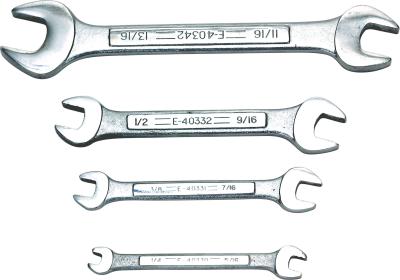
The ignition lock cylinder in your 1992 Ford Ranger is mounted on the top, right-hand side of the steering column. The ignition key and the lock cylinder operate together as a single unit and synchronize with the ignition switch to turn your Ranger’s engine on and off. Eventually, this action causes the cylinder's internal mechanism to wear out after years of service and fail. Fortunately, the lock cylinder in your 1992 Ranger is fairly accessible and you can install a new one in about an hour. Learn how to replace the ignition lock cylinder on models without tilt steering wheel columns.
Disconnect the ground or black battery cable with a wrench.
Turn the key to the “On” position and point the front wheels forward.
Unfasten the steering wheel pad using a Phillips-head screwdriver. Locate the mounting screws at the underside of the steering wheel.
Tilt the steering wheel pad upwards, unplug the horn electrical connectors from the steering wheel pad and remove the steering wheel pad.
Loosen the steering wheel bolt on the center shaft about four turns but do not remove the bolt. Use a ratchet, ratchet extension and socket.
Install a steering wheel removal tool on the steering wheel. Turn the tool center bolt with a wrench just enough to dislodge the steering wheel from the steering column shaft.
Remove the steering wheel removal tool and steering wheel bolt. Match mark the center shaft and steering wheel with correcting fluid and remove the steering wheel.
Unfasten the instrument panel trim cover using a Phillips-head screwdriver.
Unscrew the two bolts holding the lower steering column shroud to the top shroud using a Phillips screwdriver. Pull the lower shroud down and toward the instrument panel to remove it from the steering column.
Insert the ignition key into the lock cylinder and turn the ignition switch to the “On” position. Just make sure that the transmission selector is in the "Parking" position if your Ranger comes equipped with automatic transmission.
Look at the lock cylinder seating position in the housing so that you install the new cylinder in the same position.
Look at the underside of the ignition lock cylinder and find the small access hole. Insert a scratch awl or similar tool through the access hole and push up against the lock cylinder retaining pin. At the same time pull the lock cylinder off the housing, unplug the cylinder wiring and remove it from the steering column.
Apply a light coat of lithium-base multipurpose grease to the inside walls of the lock cylinder housing including the drive gear on the new ignition lock cylinder.
Insert the new key into the new ignition lock cylinder and turn the cylinder to the “On” position. Use the old lock cylinder as a reference, if necessary.
Push in the retaining pin of the new lock cylinder and install the cylinder into its housing. Confirm that it is properly seating. Turn the ignition key off and operate the key to all the ignition positions to make sure the mechanism is working properly.
Plug in the lock cylinder electrical connector.
Install the lower steering column shroud and tighten the screws using the Phillips screwdriver.
Secure the instrument panel trim using the Phillips screwdriver.
Position the steering wheel on the steering column shaft aligning the match marks. Hand-tighten the steering wheel bolt. Tighten the steering bolt to 33 foot-pounds using a torque wrench.
Position the steering wheel pad on the steering wheel, plug in the horn electrical connectors and secure the pad with the Phillips screwdriver.
Connect the ground or black battery cable with a wrench and operate the ignition key to make sure it operates properly.